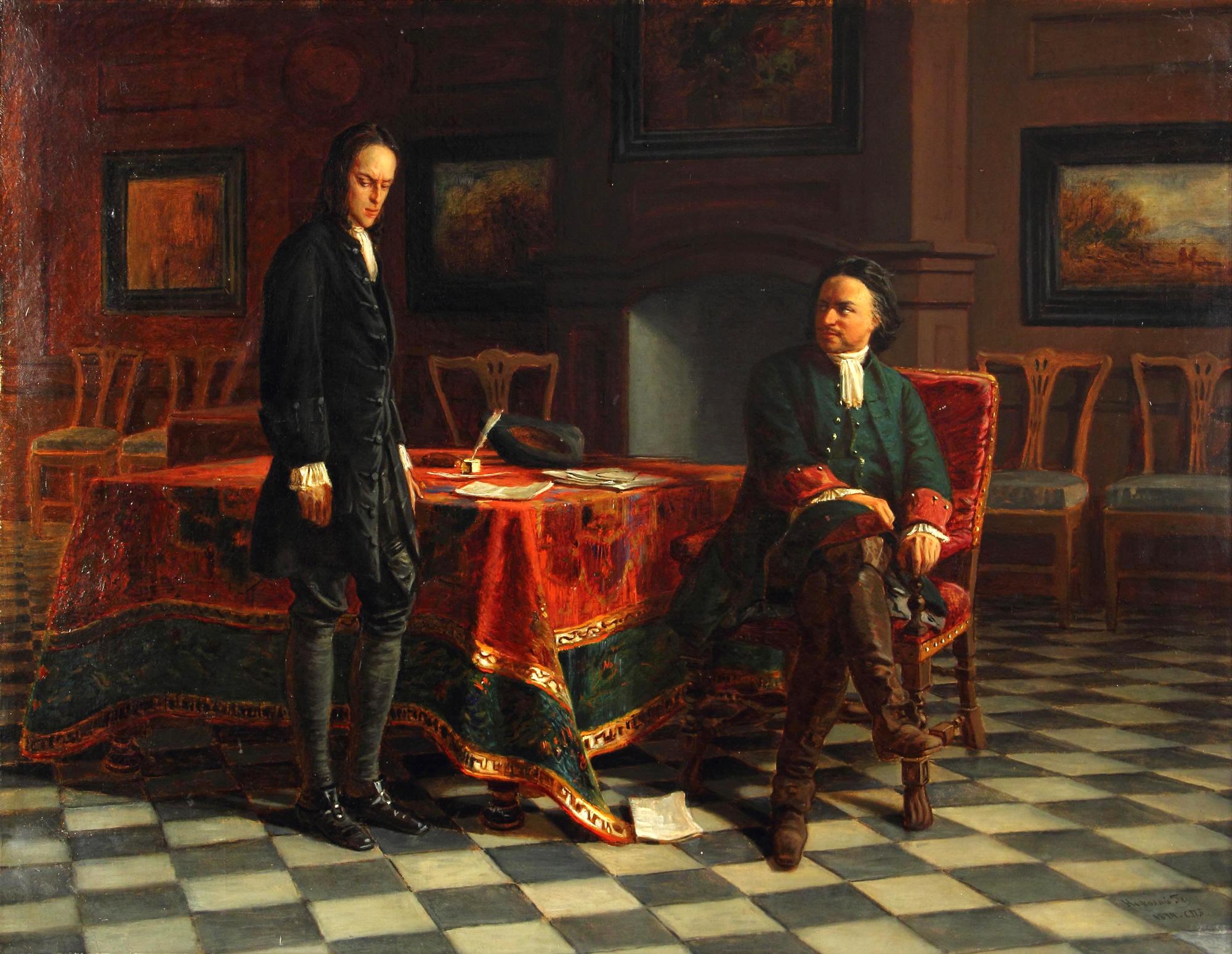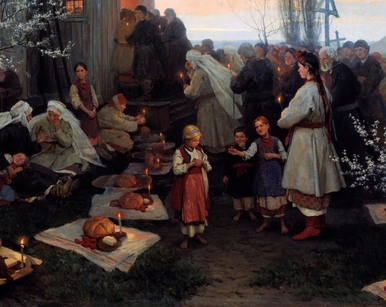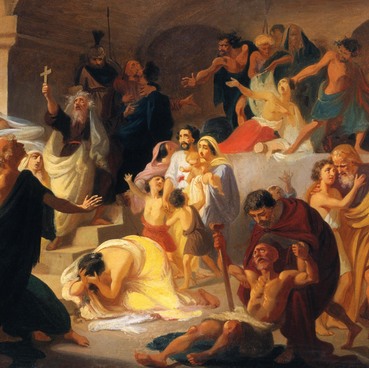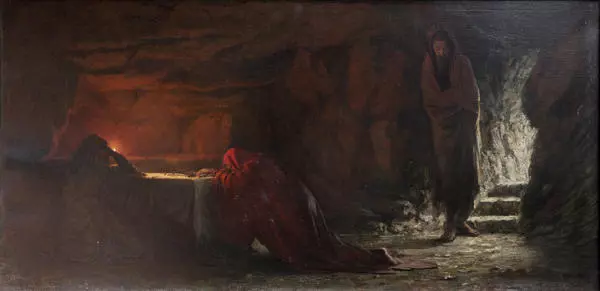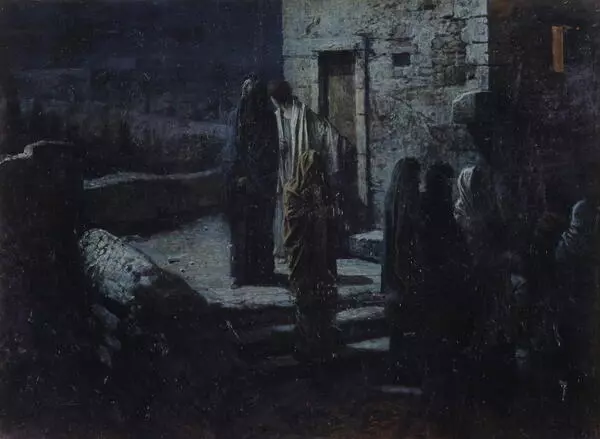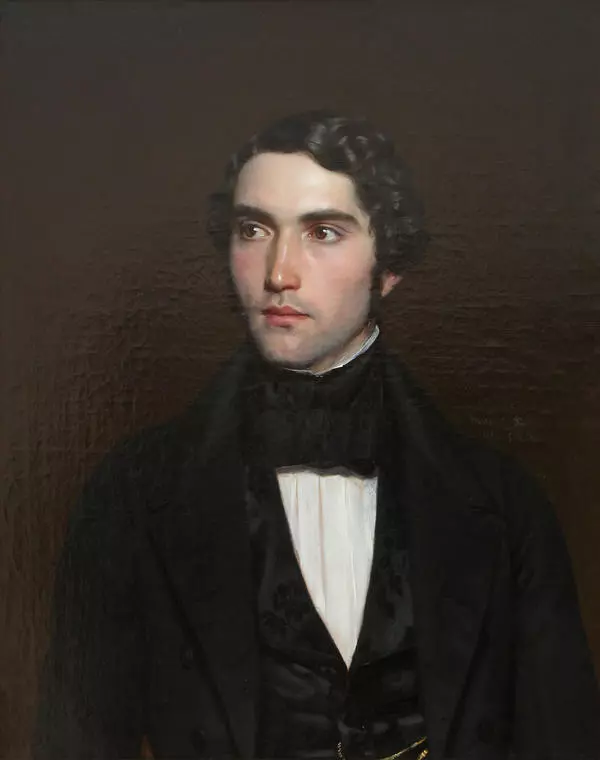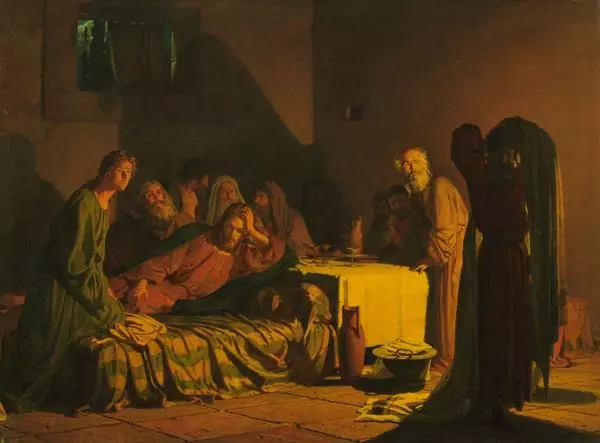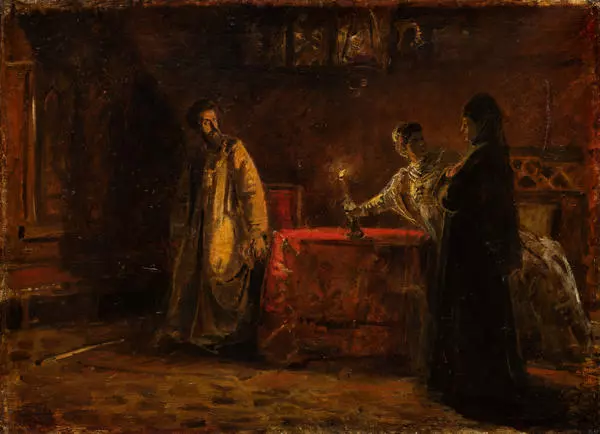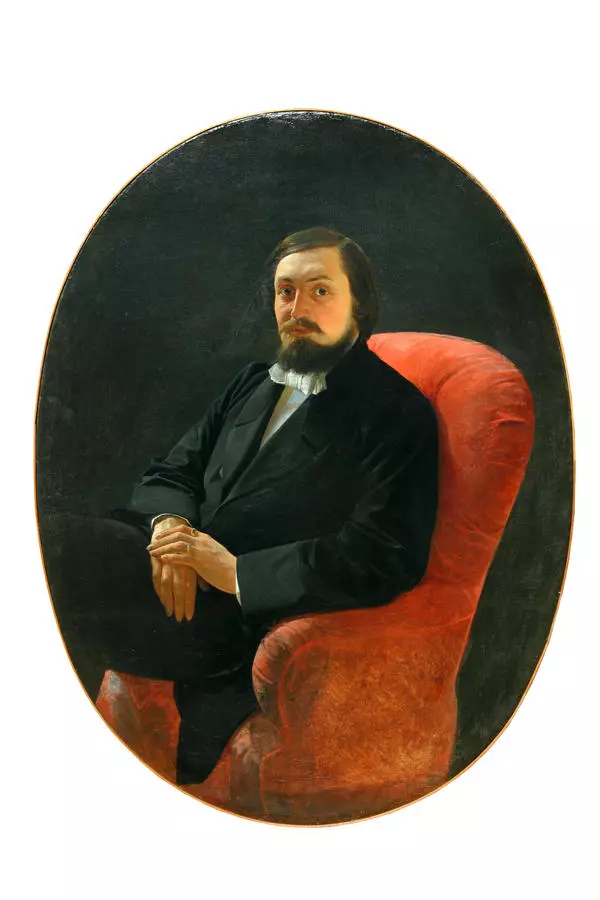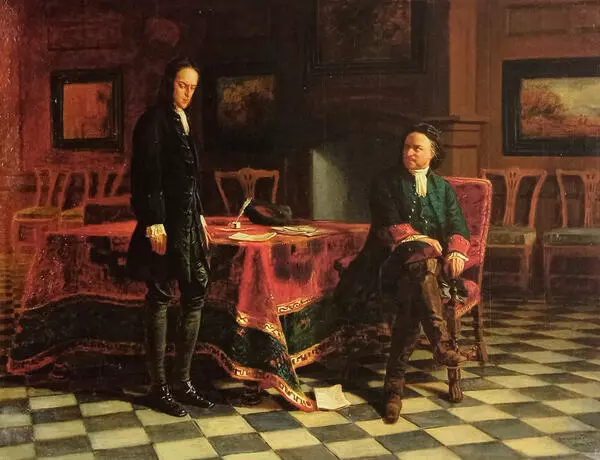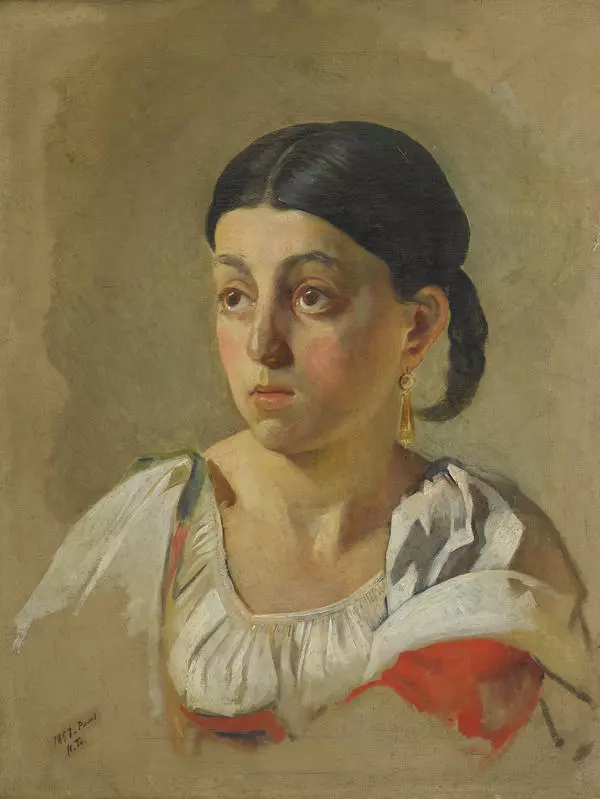Russian painter Nikolai Ghe was born in 1831 in Voronezh in the family of a landowner. During his studies at the Academy of Arts, he was greatly influenced by the romanticism of Karl Bryullov and Academician Alexander Ivanov. He is known as a wonderful master of portrait and plot painting. He also painted paintings on religious themes and significantly updated their language in anticipation of the avant-garde of the early 20th century.
The famous canvas Peter I interrogates Tsarevich Alexei by Ghe was first shown at the very first exhibition of the Association of Itinerants in 1871. The artist himself was one of the founders of the comradeship. In contrast to the aesthetics of the academicians, this canvas is inherent in the avarice and accuracy of the methods by which the author achieved a sense of authenticity of the depicted event, and its deep significance.
One of the author’s copies of this painting is kept in Rybinsk — it was received in the collection of the museum in 1920 from Petrograd. Magnificent visual memory allowed Ghe to write from memory the complex decoration of suburban palaces and residences. In this painting, the artist quite accurately reproduced the interior of Peterhof Palace Monplaisir with the characteristic interior decoration of Peter the Great time.
The alternating black and white slabs of the floor resemble a chessboard, where a dramatic game of people’s fates and the Russian Empire is played. An impressive episode of Russian history — the suspicion of conspiracy against his father and the tragic end of the Tsarevich, which fell on the heir to the throne, became a reason for Ghe to portray the historical confrontation - not only the contrast of characters, but also the conflict between the two critical eras and the struggle of life’s positions.
Despite the absence of sharp gestures and spectacular positions of the heroes of the picture, Ghe achieved a strong internal heat and expression. The artist used his favorite method of contrasting light and shadow: faces are pulled out of the darkness by bright light, in the space of the canvas purple and thick green colors collide. The viewer becomes a witness of a psychological duel: Peter’s stinging and piercing look resists the extinct and dead eyes of the Tsarevich. In the air there hangs a heavy silence, the role of a word or speaking detail is played by a fallen sheet — probably, it testifies to the undeniably proven guilt of the Tsarevich.
The famous canvas Peter I interrogates Tsarevich Alexei by Ghe was first shown at the very first exhibition of the Association of Itinerants in 1871. The artist himself was one of the founders of the comradeship. In contrast to the aesthetics of the academicians, this canvas is inherent in the avarice and accuracy of the methods by which the author achieved a sense of authenticity of the depicted event, and its deep significance.
One of the author’s copies of this painting is kept in Rybinsk — it was received in the collection of the museum in 1920 from Petrograd. Magnificent visual memory allowed Ghe to write from memory the complex decoration of suburban palaces and residences. In this painting, the artist quite accurately reproduced the interior of Peterhof Palace Monplaisir with the characteristic interior decoration of Peter the Great time.
The alternating black and white slabs of the floor resemble a chessboard, where a dramatic game of people’s fates and the Russian Empire is played. An impressive episode of Russian history — the suspicion of conspiracy against his father and the tragic end of the Tsarevich, which fell on the heir to the throne, became a reason for Ghe to portray the historical confrontation - not only the contrast of characters, but also the conflict between the two critical eras and the struggle of life’s positions.
Despite the absence of sharp gestures and spectacular positions of the heroes of the picture, Ghe achieved a strong internal heat and expression. The artist used his favorite method of contrasting light and shadow: faces are pulled out of the darkness by bright light, in the space of the canvas purple and thick green colors collide. The viewer becomes a witness of a psychological duel: Peter’s stinging and piercing look resists the extinct and dead eyes of the Tsarevich. In the air there hangs a heavy silence, the role of a word or speaking detail is played by a fallen sheet — probably, it testifies to the undeniably proven guilt of the Tsarevich.
